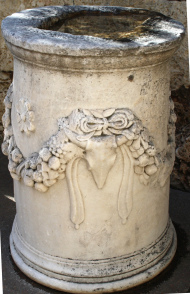Athens was the center of the short-lived Athenian Empire, which started in 454 B.C., peaked in 450 B.C. and dissolved in 404 B.C.
Athens was known, among many things, for its giant temple dedicated to the Greek god Zeus. The temple of Zeus, which was larger than the Parthenon, had 104 columns each of which was about 56 feet (17 meters) tall. The building itself was made of marble and was 315 feet (96 meters) long and 131 feet (40 meters) wide. The huge statue of Zeus on his throne, housed in the temple, is considered by many to be one of the seven wonders of the world.
During his second missionary journey the Apostle Paul, along with fellow evangelists Silas and Timothy, travel to Berea. Although the Bereans are very receptive to the Gospel message Jews from another city arrive seeking to cause trouble for the apostle. He decides to travel alone to Athens and instructs Timothy and Silas to meet him there.

Paul's Spirit Is Stirred
Paul's spirit, while waiting in Athens for his traveling companions, is stirred when he notices the city has given itself totally to the worship of pagan gods. He begins to preach about Jesus in the synagogues, in the marketplace, and with just about anyone who would listen. He is soon heard by some philosophers known as the Epicureans and the Stoics.
The Epicureans believe the purpose of life is to 'eat, drink and be merry,' meaning to seek and indulge in the pleasures of life whenever possible. The Stoics, on the other hand, believe in depriving themselves and pursuing some sort of harmony with all that exists.
After the Epicureans and Stoics in Athens dispute with Paul over his message, they take him to the Areopagus (or Mars Hill as the Romans call it) to further explain what he teaches. The Life and Epistles of Apostle Paul by Conybeare and Howson states the following regarding how the citizens of the city loved to talk and debate.
"Thus, Apostle Paul found philosophers at Athens, among those whom he addressed in the Agora. This, as we have seen, was the common meeting-place of a population always eager for fresh subjects of intellectual curiosity. Demosthenes had rebuked the Athenians for this idle tendency four centuries before, telling them that they were always craving after news and excitement, at the very moment when destruction was impending over their liberties.
"And they are described in the same manner, on the occasion of Apostle Paul's visit, as giving their whole leisure to telling and hearing something newer than the latest news" (chapter 10, section entitled "Later period of the Schools").
Paul uses an altar he sees dedicated to "an unknown god" as a springboard for teaching those in Athens about the real God that can be known (Acts 17)!